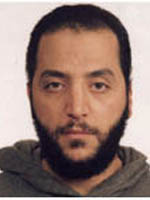
On November 12, 2001 American Airlines Flight #587 crashed in Queens, New York shortly after take off, killing 265. Some observers were quick to suggest that al Qaeda terrorists had brought the aircraft down. But the October 26, 2004 official report by the National Transportation Safety Board blamed the crash on the co-pilot, who jerked the rudder back and forth in an effort to correct for turbulence from a preceding jet.
The crash was soon eclipsed by the repercussions of the 9/11 terrorist attacks, the anthrax mailings, and the war in Afghanistan. Yet suspicions lingered. Many eyewitness accounts, for instance, seemed consistent with an on-board explosion, yet the report brushed them aside as contradicting each other and generally unreliable.
On August 27, 2004, Canada’s “National Post” reported that, according to a leaked top secret Canadian Government report, Mohammed Mansour Jabarah, a 22-year old Canadian, told interrogators that he had heard from an assistant of Khalid Sheikh Mohammed (KSM), mastermind of the 9/11 attacks, that the Flight #587 crash was the result of an al Qaeda shoe bomb. The shoe bomber was “Farouk the Tunisian”. Newspaper photographs showed him to be Abderraouf Jdey, a 36-year old Montreal-based Canadian of Tunisian origin. This story was suppressed in the NSTB report two months later.
Jdey is one of the seven al Qaeda terrorists listed in the FBI’s plea for information from the public in May, 2004. He had emigrated to Canada in 1991, gained citizenship in 1995, and then traveled to Afghanistan where he trained as one of the ten substitutes for the 9/11 attackers. According to KSM, Jdey was slated for pilot training and was to be in the second wave of attacks. Jdey recorded a martyrdom statement in a video later found by American forces in Afghanistan. He returned to Montreal in summer 2001.
American media editors unanimously refused to report the National Post story, so it sank into near oblivion. Nonetheless, several circumstances lend credence to it. First, Jabarah’s revelation constituted a roundabout al Qaeda claim to have caused the crash. Second, one month later Richard Reid was stopped just before igniting a shoe bomb on another flight, so shoe bombing was clearly a tactic al Qaeda was using. Third, Abderraouf Jdey disappeared after leaving Canada in November, 2001. Fourth, the report’s dismissal of the eyewitness reports seems highhanded. Even if some of them were imperfect, others accurately reflected the consequences of a shoe bomb attack–e.g., flames in some part of the aircraft. Fifth, Abderraouf Jdey must be considered the leading suspect in the 2001 anthrax mailings.
What are we to make of all this?
If Jabarah was right, it would account for Jdey’s disappearance and tie in with Jdey’s other activities in the autumn of 2001. It would mean that the investigation of the crash was either incompetent or, much more likely, fixed to keep the public in the dark. Media editors, subservient to the federal government, refused to pursue either the shoe bomber story or the possibility of incompetence or fraud in the crash investigation.
In theory, if the airplane had crashed from poor co-pilot training or a hidden mechanical flaw, that should alarm potential flyers every bit as much as a terrorist shoe bombing. But in reality airline companies, governments, and the media perceive that sensational terrorism trumps all other threats.
If indeed Abderraouf Jdey brought down Flight #587 with a shoe bomb, the federal government would have been deeply negligent in permitting an al Qaeda operative whose whereabouts were known to carry out this attack. It was presumably also endeavoring to suppress the story that the anthrax mailings were an al Qaeda attack, which could have led to reopening the investigation of the 9/11 attacks and thereby threaten senior officials.
Congress should insist that the FBI make public its findings on the crash and that it investigate the shoe bomb story. But Congress has spurned other opportunities to investigate the events of 2001, so we should not expect much from it. Instead, this story looks like one more that the American people must learn in order to understand their own real history even if they can’t do anything about it.
Fortunately, at least this case is not hard to understand. It has Cover-up written all over it.
*****
Kenneth J. Dillon is an historian and former State Department intelligence analyst who writes on science, medicine, and history. See the biosketch at About Us. For a full explanation of Jdey’s role in the anthrax mailings case, see https://scientiapress.com/jdey-anthrax-mailings. For an analysis of other fatal moments in American history, see The KGB Theory of American Assassinations.
